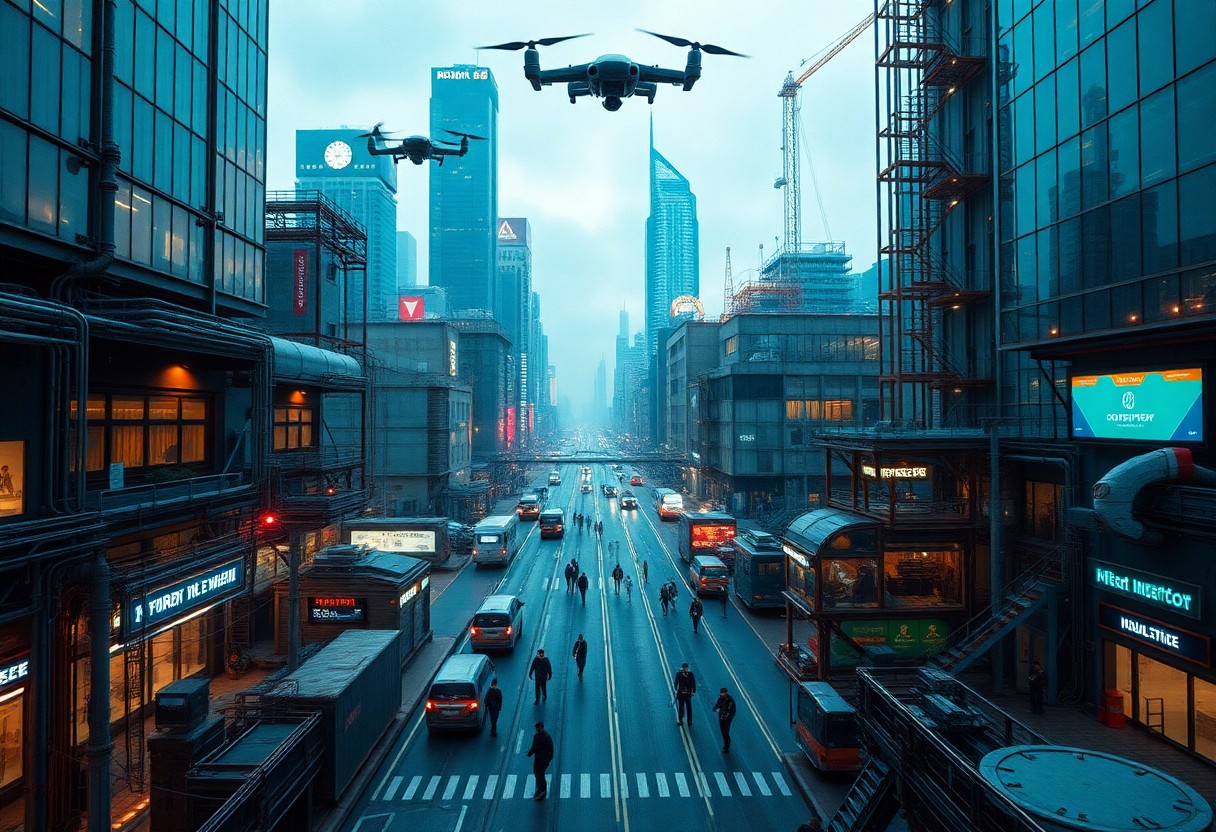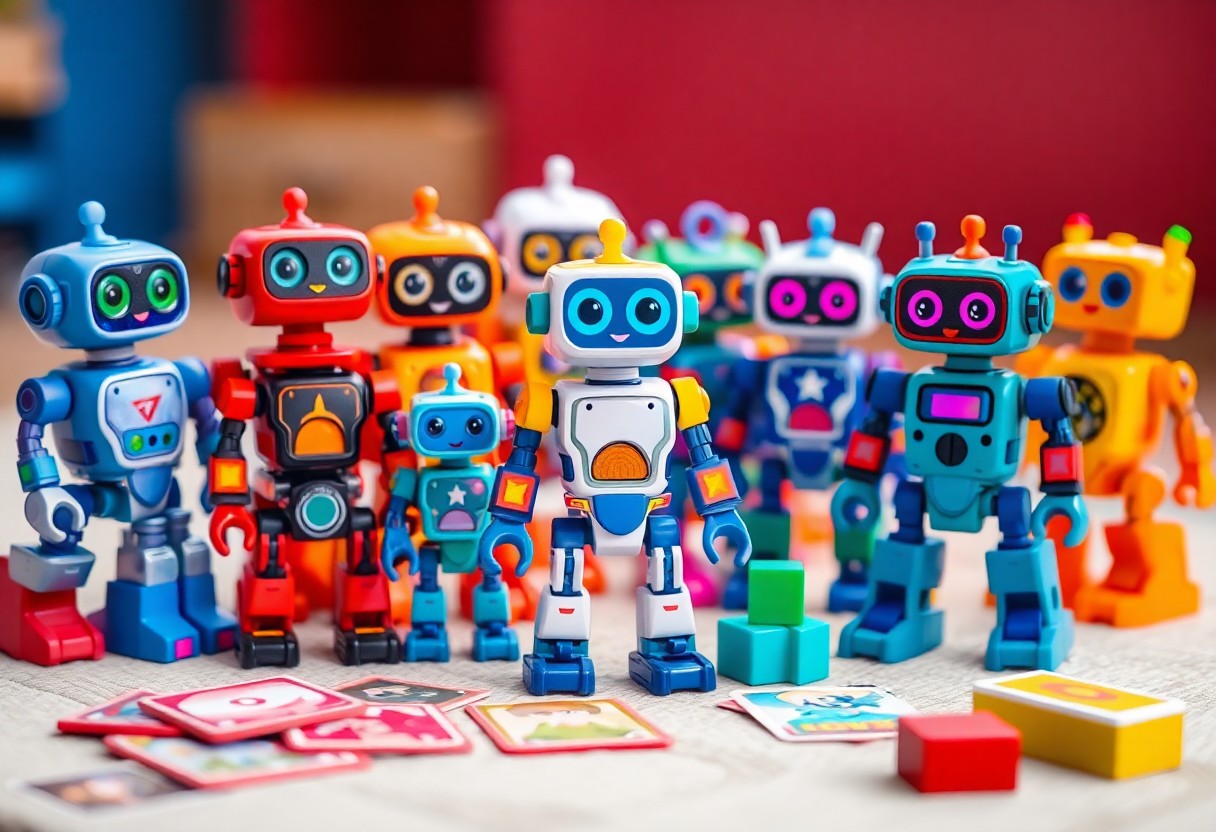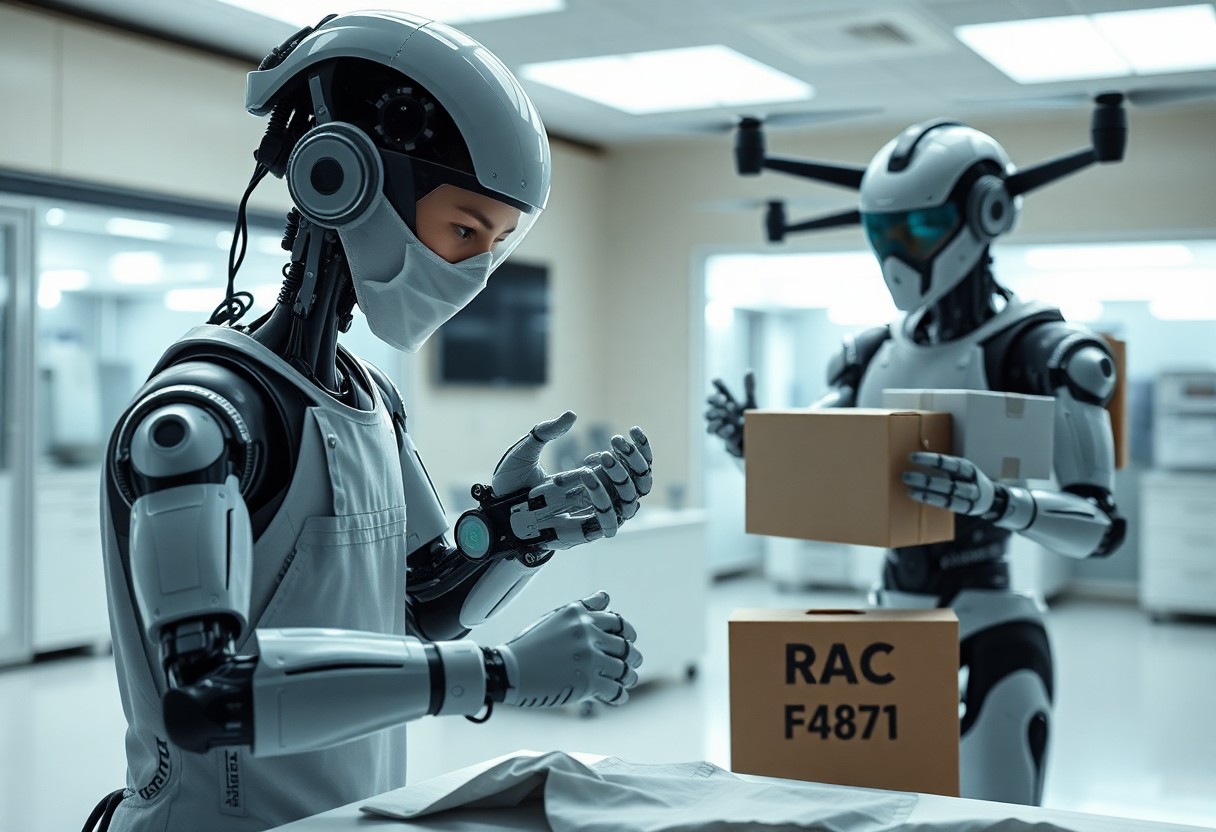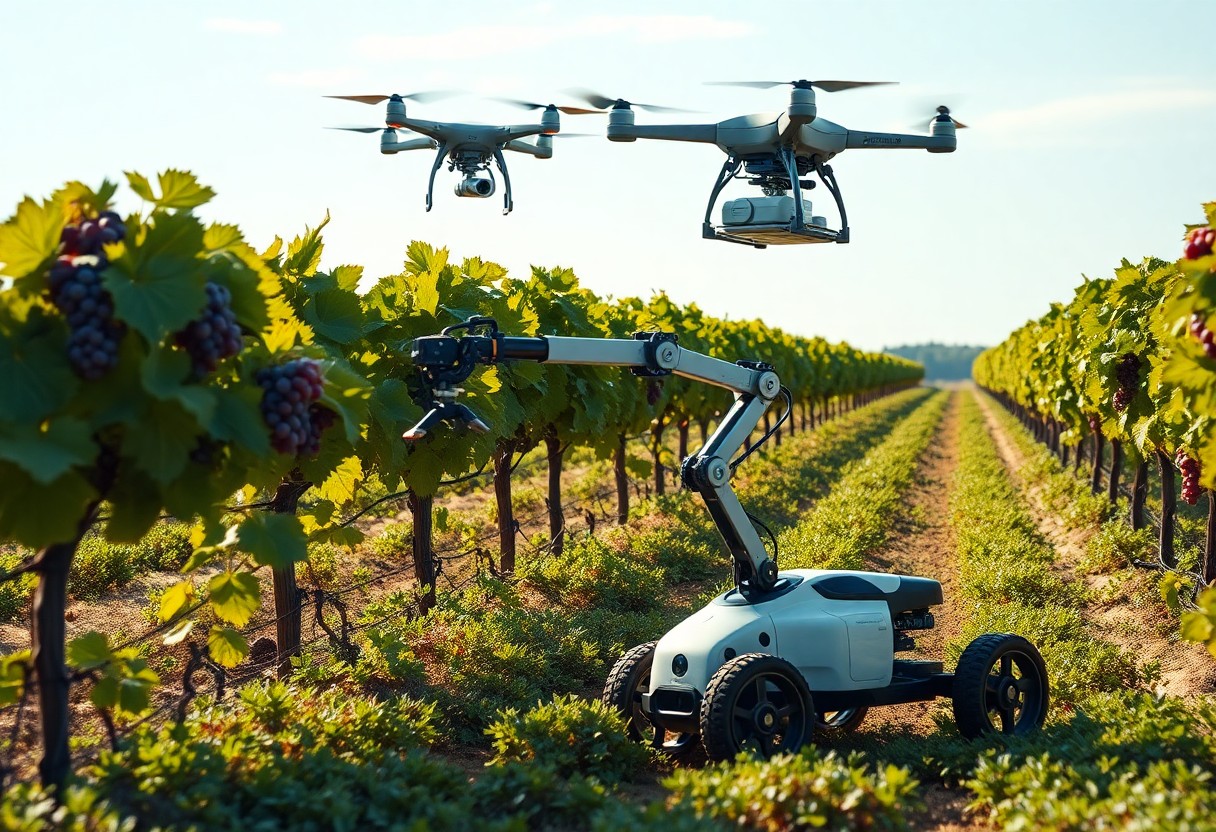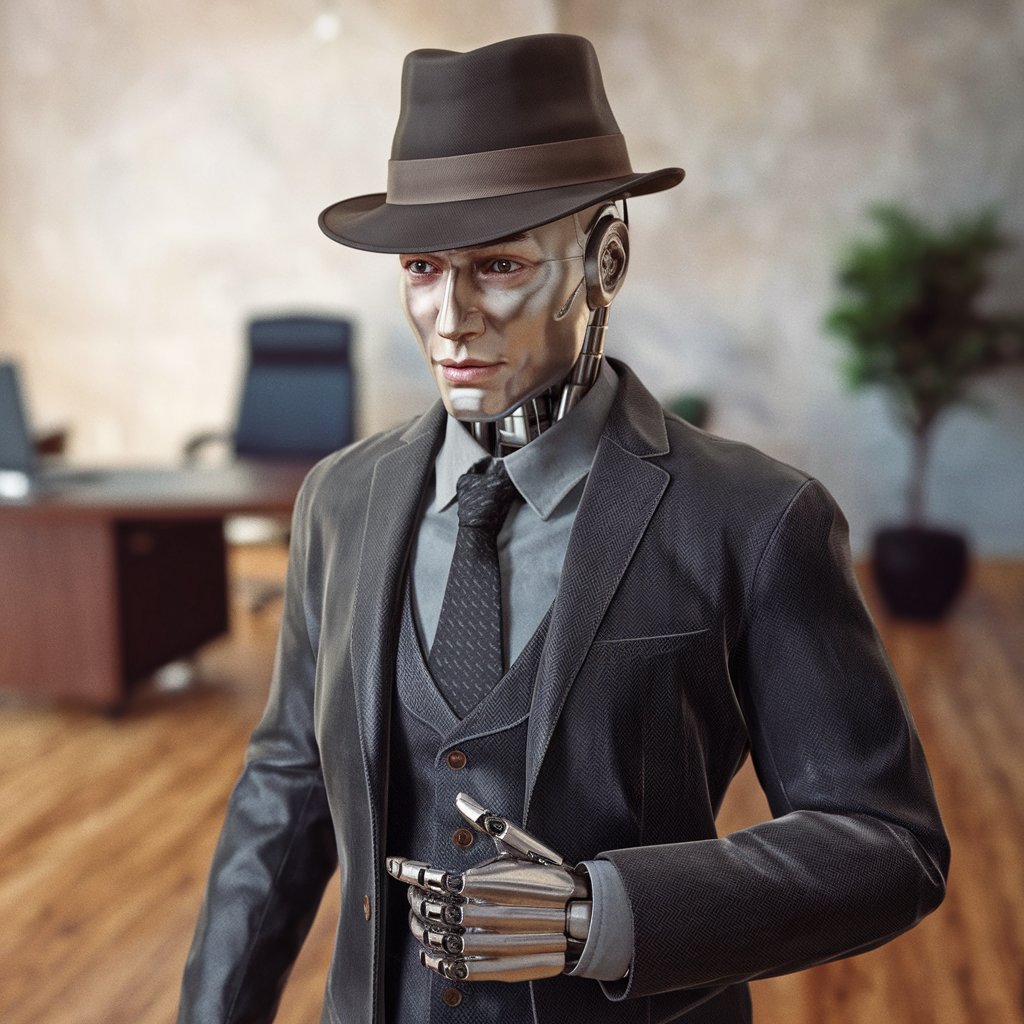Robotics is transforming your everyday life, with groundbreaking innovations that are redefining how you interact with technology. From advanced AI-driven machines to autonomous vehicles, these developments are revolutionizing numerous industries, including healthcare, manufacturing, and transportation. In this blog post, you will explore the latest trends and innovations in robotics, highlighting the key advancements that are shaping your world today and what you can expect in the near future.
Transforming Industries: Robotics in Manufacturing and Logistics
Robotics is reshaping manufacturing and logistics, driving remarkable advancements that revolutionize how products are created, assembled, and delivered. Automation technologies streamline processes, optimize workflows, and minimize errors, fundamentally altering production lines. These innovations not only enhance the speed of operations but also enable businesses to adapt swiftly to market demands, demonstrating how critical integration of robotics is in modern industry landscapes.
Automation and Efficiency Gains
Implementing robotic systems leads to significant efficiency gains, with companies reporting productivity increases of up to 30%. Automated machines handle repetitive tasks, reducing human error and expediting production timelines. For instance, automotive plants utilizing collaborative robots (cobots) can produce vehicles faster while maintaining high quality, showcasing the transformative impact of automation in this sector.
The Role of AI in Robotics Deployment
AI plays a pivotal role in enhancing robotics capabilities, allowing for smarter, more adaptive machines. By integrating machine learning algorithms, robotics can analyze vast amounts of data in real-time, enabling them to make informed decisions and optimize their operations independently. This level of autonomy not only improves efficiency but also allows for predictive maintenance, reducing downtime and operational costs, ensuring seamless production flow.
The influence of AI on robotics extends beyond basic operations. Advanced analytics and AI systems empower robots to learn from their environments, enabling them to perform complex tasks with precision. For example, logistics companies are employing AI-driven robots to navigate warehouses, optimizing inventory management and sorting processes. With the ability to adapt to changing conditions and learn from past experiences, these robots enhance your operational capabilities efficiently, setting a new standard for supply chain agility and resilience.
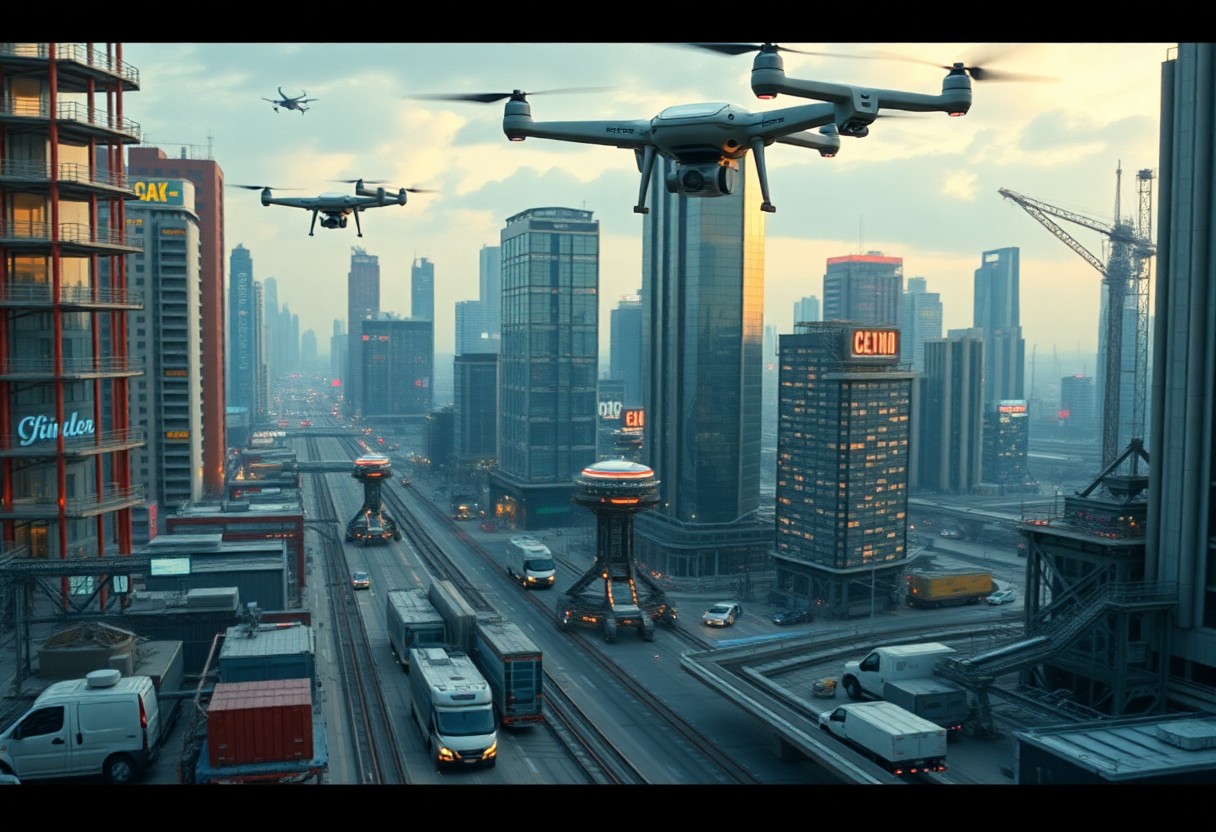
The Rise of Collaborative Robots: Partners in Progress
As automation takes center stage, collaborative robots, or cobots, are emerging as vital partners in various industries. Unlike traditional robots that operate in isolation, cobots are designed to work alongside humans, enhancing productivity and fostering a cooperative work environment. They are equipped with advanced sensors and AI capabilities, allowing them to perform tasks with precision while adapting to human movements and intentions. This seamless collaboration optimizes workflows, reduces operational costs, and ensures safety in settings like manufacturing, healthcare, and logistics.
Enhancing Human-Robot Interaction
Innovations in human-robot interaction are revolutionizing how cobots are integrated into everyday tasks. By utilizing intuitive interfaces, such as touchscreen controls or voice commands, you can easily direct cobots to perform specific functions. Additionally, advancements in machine learning enable these robots to learn from your behaviors and preferences, allowing for a more fluid and natural collaboration. As a result, your comfort and efficiency around these machines significantly improve, fostering a workplace that embraces cutting-edge technology without sacrificing the human touch.
Applications Across Various Sectors
Cobots are making a significant impact on diverse industries, from manufacturing to healthcare. In factories, they’re streamlining production processes by collaborating with human workers on assembly lines, handling repetitive tasks without fatigue. In hospitals, cobots assist medical personnel by delivering supplies and sanitizing rooms, enabling healthcare workers to focus on patient care. In agriculture, these robots help with planting and harvesting by performing tasks with remarkable efficiency, ensuring higher yields and effectively addressing labor shortages. As these examples illustrate, cobots are not merely tools; they are integral partners that enhance capabilities in various sectors.
The versatility of cobots extends to numerous applications across different sectors. In manufacturing environments, for instance, they excel at quality control tasks, quickly assessing products for defects while working alongside human workers to maximize output. The logistics industry benefits from cobots as they improve order fulfillment processes, expertly navigating warehouses to deliver products to the correct locations in record time. Similarly, in construction, they assist in carrying heavy materials, alleviating physical strain on workers, and reducing workplace injuries. As cobots become more advanced, the potential for their application only continues to grow, ensuring they play an increasingly vital role in shaping the future of work across all industries.
Designing the Future: Advances in Robotics Engineering
Engineers are pushing the boundaries of robotics design, focusing on creating smarter, more adaptable machines. This involves employing cutting-edge technologies and techniques in robotics engineering to enhance functionality and efficiency. As you explore the latest trends, you’ll see an emphasis on creating systems that are not only high-performing but also capable of seamless interaction with humans and their environment.
Materials and Production Techniques
Innovative materials and advanced production techniques are transforming robotics fabrication. New lightweight composites enhance strength and flexibility while reducing overall weight, allowing robots to maneuver effortlessly in complex environments. 3D printing technology is also revolutionizing production, enabling rapid prototyping and customization of robotic parts, fostering innovation and lowering costs in design processes.
Innovations in Mobility and Dexterity
Recent breakthroughs in mobility and dexterity are enabling robots to navigate diverse terrains and perform intricate tasks with remarkable precision. These innovations are critical for applications ranging from search and rescue operations to surgical procedures. Robots are now embedding advanced algorithms and sensor technologies that allow for real-time adjustments in movement, improving their ability to work alongside humans in collaborative settings.
Consider how Boston Dynamics’ Spot robot exemplifies these advancements. Equipped with a sophisticated array of sensors and sophisticated software, Spot can traverse challenging environments while maintaining balance and adaptability. Similarly, robots like those developed at MIT leverage soft robotics principles, utilizing flexible materials that mimic natural organisms. This allows for more nuanced movements and dexterity, crucial for delicate tasks such as manipulation or interaction with fragile objects. As these technologies evolve, your understanding of robotics will expand, revealing endless possibilities for practical applications in everyday life.
Ethics and Regulations: Navigating the Moral Landscape of Robotics
As robotics technology rapidly develops, ethical considerations and regulations must evolve in tandem. You’ll encounter a growing conversation around how robots should be designed and utilized, particularly in sensitive sectors like healthcare and law enforcement. These discussions highlight the need for a framework that balances innovation with societal values, ensuring that advancements benefit all while minimizing risks and ethical breaches.
Key Ethical Considerations
Central to the ethics of robotics is the question of accountability. When a robot causes harm or malfunction, determining liability is complex. You also must consider privacy issues arising from robots collecting personal data, as well as the potential for job displacement. Additionally, the implications of AI decisions in critical areas, such as medical diagnostics and autonomous vehicles, challenge existing moral boundaries and necessitate vigilant, ongoing discourse.
Current Legislative Developments and Challenges
Legislators worldwide are grappling with how to regulate the development and deployment of robotics in everyday life. Existing frameworks often fall short in addressing the nuances of robotic technologies, particularly in areas like algorithm bias and transparency. In Europe, for example, the proposed regulations set clear standards for AI, yet the pace of technological advancement frequently outstrips legislative efforts. Notably, the absence of a cohesive global regulatory body complicates enforcement and compliance across borders.
In the United States, for instance, recent initiatives have focused on the ethical use of AI in surveillance technologies, spurred by widespread concerns over civil liberties and privacy. However, achieving consensus on regulations remains a significant hurdle due to the fragmented nature of governmental oversight across states. Some local governments have taken proactive measures, including bans on facial recognition technologies, showcasing a grassroots approach to regulatory challenges. Overall, your engagement in these discussions is vital, as continued collaboration among technologists, policymakers, and the public can pave the way toward equitable regulations that foster innovation while safeguarding human rights.
The Intersection of Robotics and Daily Life: From Homes to Healthcare
Robotics is seamlessly integrating into everyday life, enhancing how you live, work, and manage your health. From smart home devices that automate chores to advanced surgical robots that assist healthcare professionals, the influence of robotics is tangible. Innovations continue to evolve, promising a future where robots not only simplify tasks but also improve quality of life. Discover more about The Future of Robotics: Shaping Our World and explore the multitude of applications transforming society.
The Emergence of Personal Assistant Robots
Personal assistant robots are becoming a prominent feature in households, designed to manage daily tasks and enhance convenience. These robots can schedule appointments, control smart home devices, and even provide companionship. As technology improves, you may find these assistants capable of natural conversation and understanding your preferences, making them an crucial part of your daily routine.
Robotics in Health Monitoring and Surgery
The integration of robotics in healthcare is revolutionizing patient monitoring and surgical procedures. Advanced robotic systems are now used to perform minimally invasive surgeries with precision, enhancing recovery times and reducing complications. Wearable health monitoring devices collect vital signs and analyze data, enabling early detection of potential health issues and personalized treatment plans tailored to your needs.
Robotics in health monitoring extends beyond surgery; telehealth platforms utilize robotic systems to facilitate remote consultations, making healthcare more accessible. Consider the da Vinci Surgical System, which allows surgeons to perform complex procedures with greater accuracy and less trauma to the patient. Furthermore, robotic exoskeletons assist individuals with mobility impairments, drastically improving their quality of life. As these technologies advance, you can expect a healthcare system that is more efficient, responsive, and patient-friendly, keeping you at the center of your care journey.
Conclusion
The future of robotics is filled with exciting innovations that will significantly impact your life and industry. As advancements continue, you can expect smarter automation, enhanced efficiency, and new capabilities that will redefine how you interact with technology. Staying informed about these developments will empower you to adapt and thrive in a rapidly changing world. Embrace the potential of robotics to enhance your productivity and improve various aspects of your daily life.

